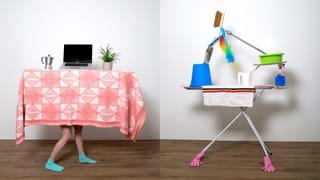My parents are proud collectors of everyday objects from around the world – think of locks, scales, antique irons. But also postcards, maps, paper dolls, fridge magnets and pottery. And silver jewels, kitchen utensils, wooden musical instruments. Not even the ceilings are spared: old iron hooks that used to hang hams dangle in the kitchen.
All of these objects are carefully arranged around my parents’ apartment in Naples in a sort of small, private museum. Those who visit for the first time are usually in awe. Some minimalists, like me, are overwhelmed.
Enter my 15-month-old son, wobbling through this carefully curated museum of family treasures and souvenirs, touching walls and frames with his hands full of residue tomato sauce from lunch, trying to lift the antique irons from the floor, and reaching for a hand-painted Chinese fan on the wall.
You see the problem.


This, in a nutshell, is the conflict between almost all parents and children. What is a perfectly organised environment for parents meant to be kept orderly at all times, is a colourful, crazy, chaotic playground for children.
You may not live in a small museum yourself, but there are definitely elements of your own house that you would rather not have a child mess around with – your bookshelves arranged by alphabetical order, that new sofa you spent a bit too much on, or the collection of wine glasses in your open-plan living room.
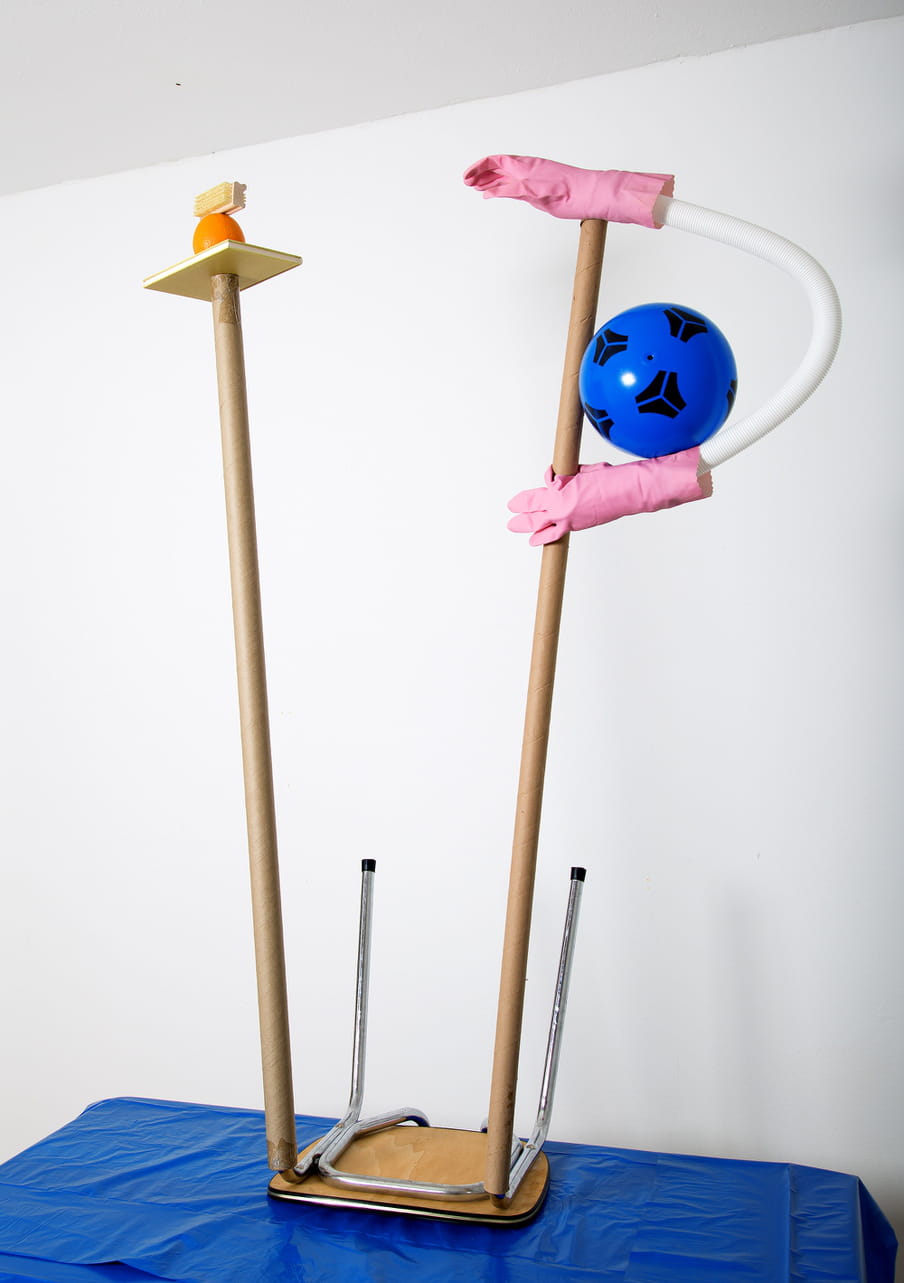
An obvious solution is to impose limits: close off rooms, hide valuables inside cupboards, and spend a lot of time monitoring your kids, constantly saying no to their impulses.
But to little avail. Because despite the limits we set, children’s exploration is likely to remain steady.
And how could it not?
The main point of childhood is learning. And one of the main ways through which children learn is by playing, without the restrictions and rules that we adults impose.
Part of the problem may come from the history of childhood inside the home. Only recently in the 20th century did homes start to include any space for children at all – partly because childhood wasn’t seen as a separate and worthy state in and of itself beforehand. In the past, adults and children did everything together – so much so that in many hunter-gatherer societies, children still share the same sleeping space while their parents have sex.
So when kids got their own room, their own chairs and their own baby things (so much stuff that Jeanne Arnold, a social scientist in the US, said that it threatens to swamp 21st century domestic space), we started to think of children’s spaces and adult spaces as separate. But those boundaries are only in our heads: where we see our immaculate collections, children see a new opportunity to explore.
The constant conundrum of efficiency vs exploration
This is why the contrasting visions that adults and children have of the space around us puts us all in a constant conundrum.
Where adults come up with systems to be more efficient with their time (for example, having all the pots and pans around the cooking station, or towels by the shower), children are all about exploration and play: they open every drawer and dissect every book and cardboard they can put their hands on.

In other words: we, adults, think in systems, rules and boundaries (we don’t eat in the bathroom, for example), and children actually learn by challenging those very systems, rules and boundaries (try explaining to them that a bidet is not where you go to fill your glass of water).
“Children explore their limits by playing,” says play expert Tim Gill. “They feel what it’s like to be away from adult control, to step out of the adult domain and create their own imaginary domain.”
More importantly, says Gill, children can explore their own emotional boundaries by exploring external boundaries. “They can explore the limit between being in control and out of control.”
Think of a child climbing on a bed and jumping off it – no matter how often you tell them it’s dangerous. You may think they’re playing, or maybe just trying to piss you off. Most likely, they’re trying to understand gravity, and how their body works in the air and on the ground – and they’re learning how to be in control of their body, and of the emotions that result from the change. Do they hurt themselves when they fall on the ground? This is how they learn about pain and they may seek reassurance, for example.
The problem of perspective inside the home
If you look closely, the combination of children and adults under the same roof seems a recipe for disaster. On the one hand, adults have a tendency to feel anxious about the chaos that children create and want to be in control: their home is the maximum expression of these desires. On the other hand, children push every button to learn how far they can go and how the universe actually works – leaving behind a trail of what adults may consider destruction and mess.
So how can such different visions of home live together peacefully?
In their book A Perfect Mess, Eric Abrahamson, professor of management at Columbia Business School, and journalist David Freedman go as far as finding cases in which arguments over messy homes led to a member of the family killing another one.
Those are the exceptions, of course. But just under 90% of parents with kids between the ages of six and 12 report that “the condition of their children’s rooms was a source of ‘mess distress’”, and 34% say that their kids’ “slovenly habits” were a “frequent source of arguments between parents and offspring”.


Solution: change perspective
If the problem is mostly about our perspective of what our homes are – a museum or a playground –, then maybe the solution is to see our homes with different eyes. As a parent, try imagining your home from a 90-centimetre viewpoint.
Look, for example, at your dinner table. You see a neatly set table with precious silverware and easily breakable ceramics on top. Of course, you want to keep that orderly and out-of-reach of your toddler. But look again with different eyes: that same table can also be a fort under which your toddler can hide and play when you’re in a Zoom call or having lunch.

Now, look at your walls. You see – usually crisp white – spaces to be kept clean, where you display artworks or photographs. But why not put large sheets of paper at the bottom, and turn half the wall into a whiteboard your kids can draw and write on? That, after all, is art as well.
Next, your recycling bin. You may have thrown away that big carton box in which your latest online order was delivered. You can put some soft blankets inside, invite your child to go in, and then move them around while making car noises. You get to do some exercise, and they get to have their own Go Mobile. You can also invite your kid to shuffle her toys around making the same noise.
And think about the plastic tub you use to collect your dirty linen. If you add some water, it turns into a small, private pool in the middle of your living room, which your child can use to make bottle caps float around in, while filling up and emptying any container you have lying around.
The home doesn’t have to be a battleground between order and play. Changing perspective can make it a comfortable place for you and a museum of learning for children – somewhere they can play and explore without you losing sleep over any broken Chinese fan.
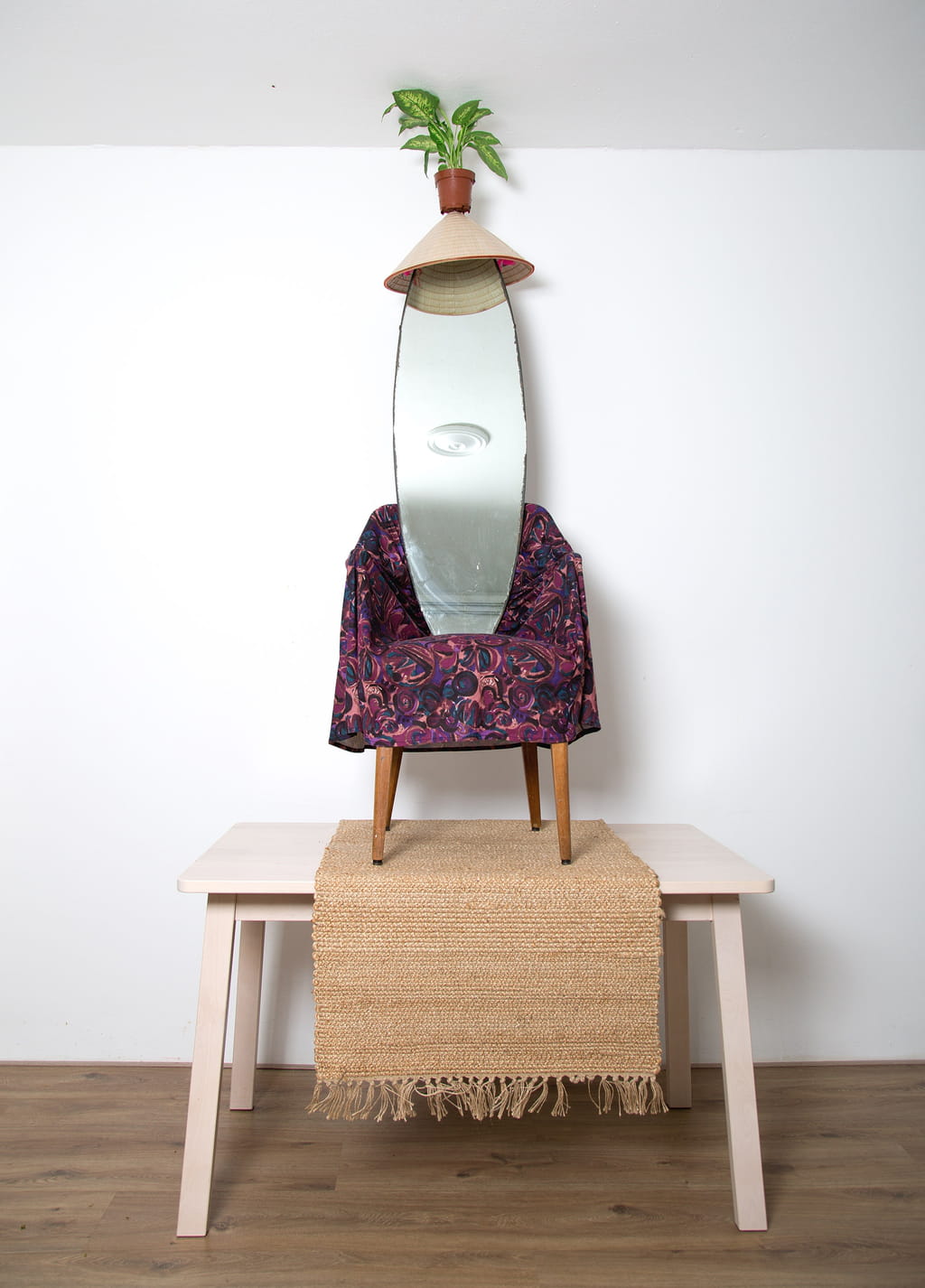
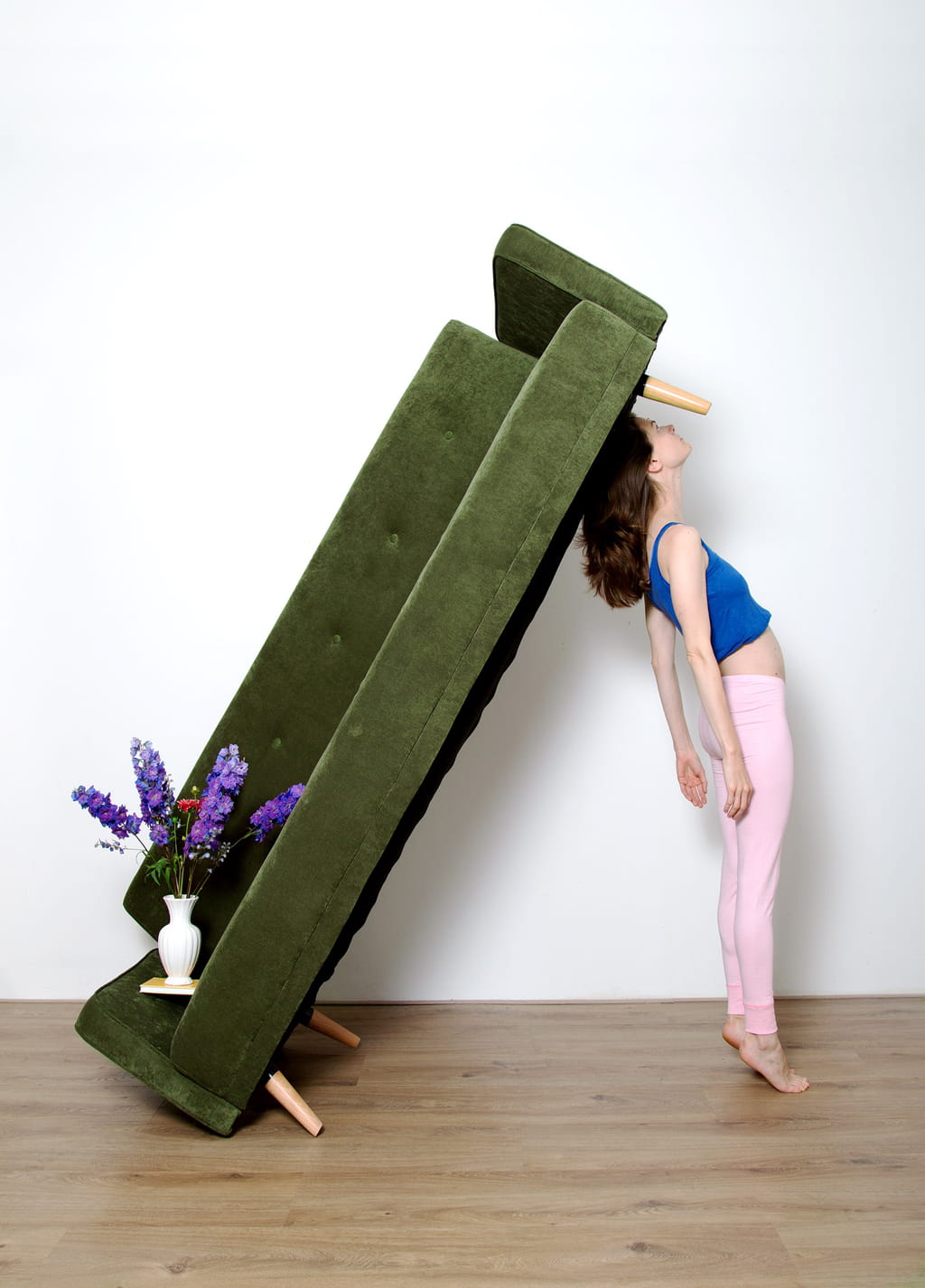
 About the images
How do you combine motherly labour with artistic practice? Artist (and mother) Csilla Klenyanszki demonstrates one clever way to do so in Pillars of Home. The series includes 98 balancing sculptures – some of which consist of herself as well – made during her son’s naps. By magically transforming her living room, kitchen, bedroom or even the staircase into a photo studio, she playfully illustrates the daily grind of combining parenthood and professional practice. (Lise Straatsma, image editor)
About the images
How do you combine motherly labour with artistic practice? Artist (and mother) Csilla Klenyanszki demonstrates one clever way to do so in Pillars of Home. The series includes 98 balancing sculptures – some of which consist of herself as well – made during her son’s naps. By magically transforming her living room, kitchen, bedroom or even the staircase into a photo studio, she playfully illustrates the daily grind of combining parenthood and professional practice. (Lise Straatsma, image editor)
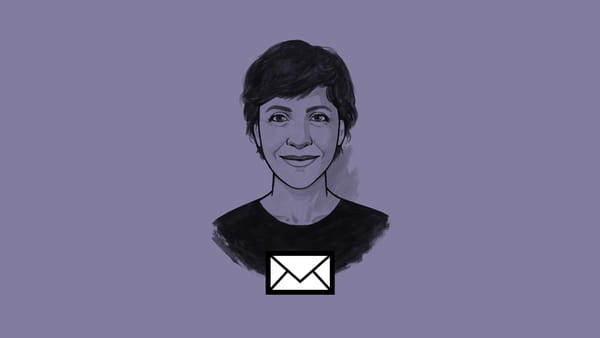 Want to stay up to date?
If you’re interested in reading more about children and what we can learn through their eyes, you can subscribe to my weekly newsletter about the First 1,000 Days of life.
Want to stay up to date?
If you’re interested in reading more about children and what we can learn through their eyes, you can subscribe to my weekly newsletter about the First 1,000 Days of life.


